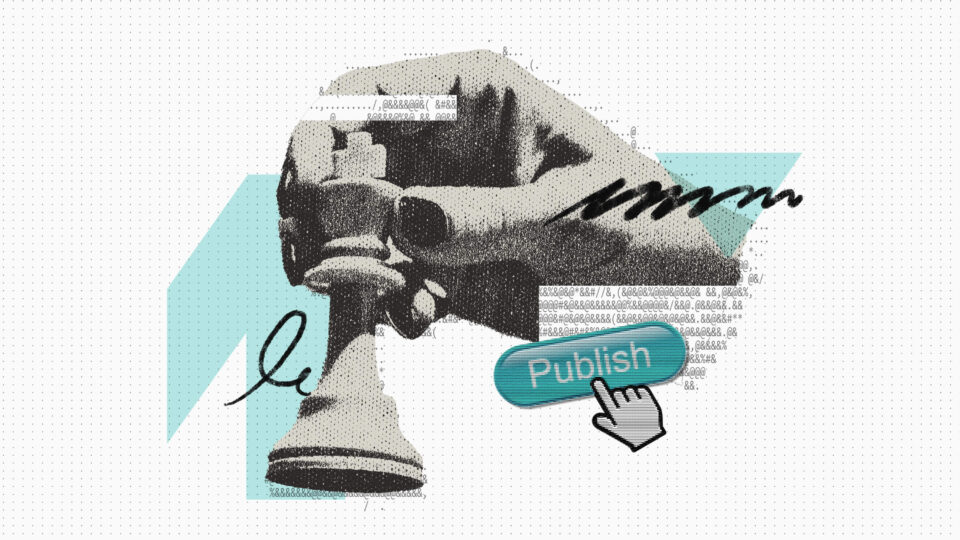In 2014, I started writing content on LinkedIn — after a few articles, I was looking to land a mainstream publication and had TechCrunch in my sights. I started pitching myself like crazy — and was rejected…like crazy. Spoiler: I successfully made it into TechCrunch, but it took me 2 years and over a dozen rejections.
Fast forward to today, I’ve published over 550 articles on mainstream media outlets and have learned a thing or two on how to effectively position yourself to become published.
Being published as an author on a mainstream or niche media publication can undoubtedly help build your authority, while simultaneously driving personal and brand visibility to relevant readership. However, if there’s anything I learned over the years, it’s that there’s a process if you want to get your content published — one that is unique to every publication. And since editors receive hundreds of email pitches day in and day out, yours will need to stand out from all the noise. Here are seven powerful strategies to help:
Just Start With an Angle
You know what sucks? Drafting a super awesome article, identifying a publication that it is a great fit for, finding the right editor to send an email to, and then getting a reply that says, “No thanks.” Now, where you could certainly self-publish rejected content on your LinkedIn or Medium, there’s a more efficient way to do it. How? Start by sending an editor an angle — and brief synopsis of what your article will be about — and close by asking them if you can send a draft. This allows the editor to quickly digest the concept and determine if it’s a fit before you invest your time in something.
Read the Submission Guidelines
Publications always have submission guidelines — or the criteria to be considered as a new writer. These guidelines will tell you the type of content that they accept and explain the prerequisites for acceptance, such as the number of words an article must contain, the topics you should cover, or even the format of the article. The submission guidelines are there to save you and the editor time, so read them carefully before you reach out. Curious what they look like? Take a gander at Business.com’s guidelines.
Read the Publication
The best way to position your pitch for a guest post right is to spend some time reading some of the publication’s existing content. Identify trends of what content is getting accepted. Look at the tone of the writing as well as the covered subject matter. Lastly, think about what type of audience they have and what type of content would benefit their readership.
Be Original
When you are thinking about topics to pitch, try to come up with something original. Publications are usually looking for guest posts that will add a unique perspective, not stale content that merely rehashes what is already there. Alternatively, editors always love hearing from experts that can add opinion to something timely happening in the news — so keep an eye on trending current events if you need inspiration on what to pitch.
Explain Why You Can Add Value
Major media publications do not need content for the sake of content. What editors are looking for is content that will engage their readers and add value. So, tell them about yourself — why would they want to publish your guest post? Why are you are so well placed to write authoritatively on your proposed topic? A short paragraph should do the trick.
Be Patient But Follow-up
Remember that editors are inundated and your pitch is likely to be one of many that they receive that day. So, while it’s okay and even necessary to politely follow up every few days to bump your pitch to the top of their email, do not persist every single day. That said, don’t give up — sometimes, it takes 6-8 well-timed emails to finally yield a response, so either set your reminders or, if you’re more advanced, use a drip marketing service to help you out.
Do Not Ask for Links
Finally, while many publications will allow a backlink in the body of a guest post or in an author’s bio, your communicated objective to the editor should be that you want to contribute something to the publication — if your sole goal is backlinks, editors will identify this very quickly which could result in a post rejection. Keep in mind — an article will not be published if it is promotional in any way.
Becoming an author on a niche or major publication is an incredible accomplishment and a huge step toward cementing thought leadership and brand visibility. At the end of the day, you need to provide value — to the editor, the readership, and your content — and remember that you’re pitching yourself, too! A strong bio and a strong pitch go a long way to helping you stand out to an editor.





